
Roderick Ross La Rocque was an American actor.

The Court-Martial of Billy Mitchell is a 1955 American CinemaScope biographical drama film directed by Otto Preminger, and starring Gary Cooper and co-starring Charles Bickford, Ralph Bellamy, Rod Steiger, and Elizabeth Montgomery in her film debut. The film is based on the notorious 1925 court-martial of General Billy Mitchell, who is considered a founding figure of the U.S. Air Force.
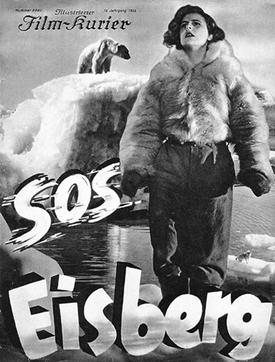
S.O.S. Eisberg is a 1933 German-US pre-Code drama film directed by Arnold Fanck and starring Gustav Diessl, Leni Riefenstahl, Sepp Rist, Gibson Gowland, Rod La Rocque, and Ernst Udet. The film was written by Tom Reed based on a story by Arnold Fanck and Friedrich Wolf. S.O.S. Eisberg follows the account of the real-life Alfred Lothar Wegener polar expedition of 1929-30. Fritz Loewe and Ernst Sorge, two members of the ill-fated Wegener Expedition served as technical consultants to Universal.

Body and Soul (1931) is an American Pre-Code action drama film directed by Alfred Santell and starring Charles Farrell, Elissa Landi, Humphrey Bogart, and Myrna Loy. The story, adapted from the stage play Squadrons by Elliott White Springs and A.E. Thomas, depicts Royal Air Force pilots in World War I.

Now We're in the Air is a 1927 American silent comedy film directed by Frank R. Strayer, starring the late-1920s intermittent comedy team of Wallace Beery and Raymond Hatton. In a supporting role, Louise Brooks plays twins, one raised French and the other raised German.

Going Wild is a 1930 Warner Brothers pre-Code comedy film based on the 1910 play The Aviator by James Montgomery and directed by William A. Seiter. The film stars many musical stars along with Joe E. Brown, Frank McHugh and Johnny Arthur.
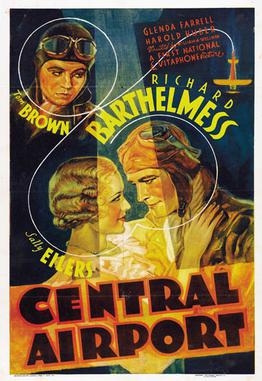
Central Airport is a 1933 American pre-Code aviation drama film directed by William A. Wellman, based on the John C. "Jack" Moffitt story, "Hawk's Mate". The film stars Richard Barthelmess and Sally Eilers. Central Airport was produced and released by Warner Bros., on April 15, 1933. John Wayne had an uncredited part in the film, playing a co-pilot, and this film features his first on-screen death.

The Legion of the Condemned is a 1928 American silent film directed by William A. Wellman and produced by Jesse L. Lasky, Wellman, and Adolph Zukor and distributed by Paramount Pictures. Written by former World War I flight instructor John Monk Saunders and Jean de Limur, with intertitles by George Marion, Jr., the film stars Fay Wray and Gary Cooper.

Death in the Air is a 1937 American film directed by Elmer Clifton and starring Lona Andre, John Carroll, Leon Ames and Henry Hall. The film is also known as Murder in the Air in the United Kingdom and as The Mysterious Bombardier. The film was Fanchon Royer's first production for her new company, Fanchon Royer Features, Inc. Film Daily reported that former FBI agent Melvin Purvis was offered a role in the film but declined.
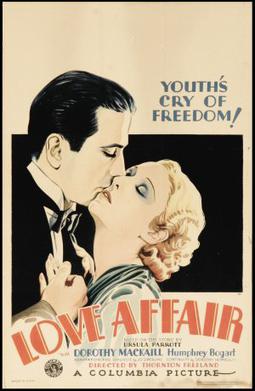
Love Affair is a 1932 American pre-Code romance film based on Ursula Parrott's short story of the same name. The film is directed by Thornton Freeland and produced by Columbia Pictures. Love Affair follows an adventurous socialite, who is in love with an aviation designer.

The Lost Squadron is a 1932 American pre-Code drama, action, film starring Richard Dix, Mary Astor, and Robert Armstrong, with Erich von Stroheim and Joel McCrea in supporting roles, and released by RKO Radio Pictures. Based on the novel The Lost Squadron (1932) by Dick Grace, the film is about three World War I pilots who find jobs after the war as Hollywood stunt fliers.
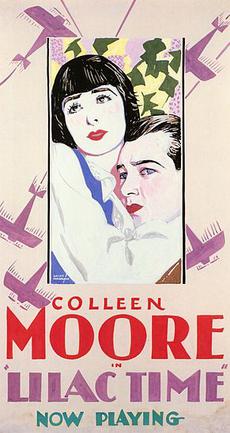
Lilac Time is a 1928 American sound romantic war film directed by George Fitzmaurice and starring Colleen Moore and Gary Cooper.This film was released with a synchronized musical score with sound effects using the Vitaphone sound system. The film is about young American aviators fighting for Britain during World War I who are billeted in a field next to a farmhouse in France. The daughter who lives on the farm meets one of the new aviators who is attracted to her. As the flyers head off on a mission, the young aviator promises to return to her.
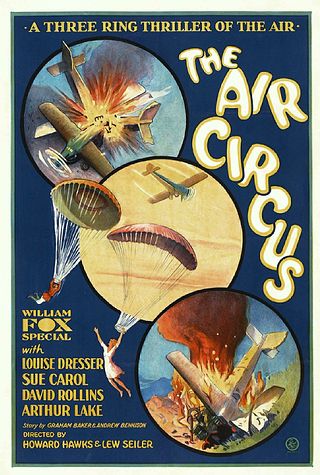
The Air Circus is a 1928 American sound part-talkie drama film directed by Howard Hawks and starring Arthur Lake, Sue Carol, David Rollins, and Louise Dresser. It is the first of Hawks's aviation films. The film is notable as the first aviation oriented film with dialogue.
The Sky Hawk is a 1929 American pre-Code adventure film, produced and distributed by Fox Film Corporation and directed by John G. Blystone. The screenplay was adapted by Llewellyn Hughes from his article "Chap Called Bardell" and novelized by Guy Fowler. The film stars John Garrick, Helen Chandler and Gilbert Emery.

Young Eagles is a 1930 American pre-Code romantic drama film directed by William A. Wellman for Paramount Pictures. It stars Charles "Buddy" Rogers, Jean Arthur, and Paul Lukas. The story is based on the stories "The One Who Was Clever" and "Sky-High", written by American aviator and war hero Elliott White Springs. The film's hero is a "heroic combat aviator of the Lafayette Escadrille".

The Lost Zeppelin is a 1929 sound adventure film directed by Edward Sloman and produced and distributed by Tiffany-Stahl. The film stars Conway Tearle, Virginia Valli and Ricardo Cortez.

Heartbreak is a 1931 American pre-Code war drama film directed by Alfred L. Werker and starring Charles Farrell, Madge Evans and Paul Cavanagh.

A Hero for a Night is a 1927 American silent comedy film directed by William James Craft and produced and distributed by Universal Pictures, cashing in on the "Lindy craze", generated by Charles Lindbergh's famous ocean crossing flight. The film stars Glenn Tryon, Patsy Ruth Miller and Burr McIntosh.

Crimson Romance is a 1934 American drama film directed by David Howard and written by Milton Krims and Doris Schroeder. The film stars Ben Lyon, Sari Maritza, Erich von Stroheim, James Bush, William Bakewell and Hardie Albright. The low-budget project utilized footage from Hell's Angels (1930) and was released on October 12, 1934, by Mascot Pictures.

Flying Romeos is a 1928 American comedy adventure directed by Mervyn LeRoy and written by John McDermott, Sidney Lazarus, Gene Towne and John W. Conway. The film stars the comedy team of Charles Murray and George Sidney, stars of Universal's popular "The Cohens and Kellys" comedies, moonlighting at First National Pictures. Other sidekicks included Fritzi Ridgeway, Lester Bernard, Duke Martin, James Bradbury Jr. and Belle Mitchell. Flying Romeos was released on February 26, 1928, by First National Pictures, typically a B movie studio.




















